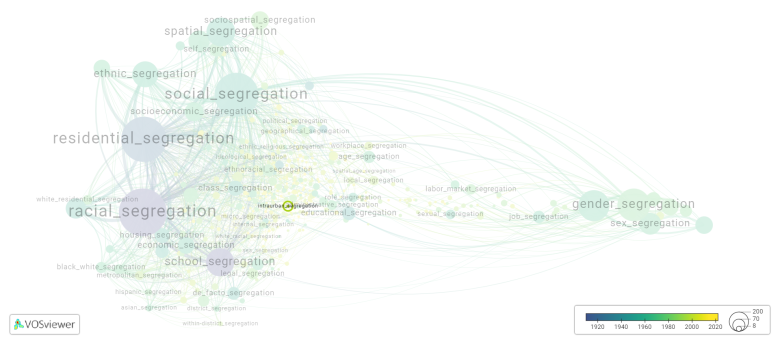Intraurban segregation
Date and country of first publication[1]
2007
United States
Definition
Intra urban segregation is the separation of different social or economic groups within a single city or urban area. This can occur through various means such as housing discrimination, unequal access to resources and services, or zoning policies that restrict certain populations to specific areas. Intra-urban segregation can lead to increased inequality, lack of social cohesion, and limited economic opportunities for disadvantaged communities. Efforts to address intra-urban segregation often involve policies that promote more diverse and inclusive neighborhoods, as well as initiatives to provide equal access to education, healthcare, and other essential resources for all residents.
See also
Related segregation forms
Intraurban segregation is frequently discussed in the literature with the following segregation forms:
ethnoracial segregation, racial segregation, local segregation

This visualization is based on the study The Multidisciplinary Landscape of Segregation Research.
For the complete network of interrelated segregation forms, please refer to:
References
Notes
- ↑ Date and country of first publication as informed by the Scopus database (December 2023).
Intraurban segregation appears in the following literature
Chung S.-Y., Brown L.A. (2007). Racial/ethnic residential sorting in spatial context: Testing the explanatory frameworks. Urban Geography, 28(4), 312-339. https://doi.org/10.2747/0272-3638.28.4.312
Lu M., Wan G. (2015). Urbanization and Urban Systems in the People's Republic of China: Research Findings and Policy Recommendations. China's Economy: A Collection of Surveys, 83-98. Wiley Blackwell.https://doi.org/10.1002/9781118982433.ch6
Marcińczak S., Tammaru T., Novák J., Gentile M., Kovács Z., Temelová J., Valatka V., Kährik A., Szabó B. (2015). Patterns of Socioeconomic Segregation in the Capital Cities of Fast Track Reforming Postsocialist Countries. Annals of the Association of American Geographers, 105(1), 183-202. Routledge.https://doi.org/10.1080/00045608.2014.968977
